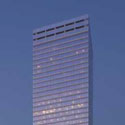Filter by
You must be a CTBUH Member to view this resource.
7 World Trade Center
Building
Completed, 2006
10048
office
steel/concrete
LEED Gold
226.5 m / 743 ft
49
1
29
8.1 m/s
156,181 m² / 1,681,118 ft²
You must be a CTBUH Member to view this resource.
You must be a CTBUH Member to view this resource.
Usually involved in the front end design, with a "typical" condition being that of a leadership role through either Schematic Design or Design Development, and then a monitoring role through the CD and CA phases.
The Design Engineer is usually involved in the front end design, typically taking the leadership role in the Schematic Design and Design Development, and then a monitoring role through the CD and CA phases.
The Design Engineer is usually involved in the front end design, typically taking the leadership role in the Schematic Design and Design Development, and then a monitoring role through the CD and CA phases.
Other Consultant refers to other organizations which provided significant consultation services for a building project (e.g. wind consultants, environmental consultants, fire and life safety consultants, etc).
These are firms that consult on the design of a building's façade. May often be referred to as "Cladding," "Envelope," "Exterior Wall," or "Curtain Wall" Consultant, however, for consistency CTBUH uses the term "Façade Consultant" exclusively.
You must be a CTBUH Member to view this resource.
Usually involved in the front end design, with a "typical" condition being that of a leadership role through either Schematic Design or Design Development, and then a monitoring role through the CD and CA phases.
The Design Engineer is usually involved in the front end design, typically taking the leadership role in the Schematic Design and Design Development, and then a monitoring role through the CD and CA phases.
The Design Engineer is usually involved in the front end design, typically taking the leadership role in the Schematic Design and Design Development, and then a monitoring role through the CD and CA phases.
The main contractor is the supervisory contractor of all construction work on a project, management of sub-contractors and vendors, etc. May be referred to as "Construction Manager," however, for consistency CTBUH uses the term "Main Contractor" exclusively.
Other Consultant refers to other organizations which provided significant consultation services for a building project (e.g. wind consultants, environmental consultants, fire and life safety consultants, etc).
These are firms that consult on the design of a building's façade. May often be referred to as "Cladding," "Envelope," "Exterior Wall," or "Curtain Wall" Consultant, however, for consistency CTBUH uses the term "Façade Consultant" exclusively.
Material Supplier refers to organizations which supplied significant systems/materials for a building project (e.g. elevator suppliers, facade suppliers, etc).
World Trade Center: 3, 4 and 7 Building and Construction Tours
28 October 2015 - Event
World Trade Center: Urban Domain Tour
28 October 2015 - Event

26 October 2015 | New York City
Developing Tall in the New York Context
Gary Barnett, Extell Development Corporation; Ric Clark, Brookfield Properties; Joseph Moinian, Moinian Group; and Larry Silverstein, Silverstein Properties, discuss development in New York City and...

26 October 2015
Integrated and Intelligent Buildings: An Imperative to People, the Planet and the Bottom Line
Kelly Romano, Mead Rusert & Hayden Reeve, United Technologies Corporation
With the impact of urbanization, larger cities, operating pressures and the rise of megatall skyscrapers, today’s new and existing buildings are increasingly being engineered as...
7 World Trade Center is located just north of the main site of the World Trade Center. With Lower Manhattan struggling to maintain its vitality as a leading business district before the rebuilding of the World Trade Center proper, 7 World Trade Center helped to jump-start the neighborhood’s resurgence both economically and sym-bolically after 9/11. The footprint of the old 1980s-era building was pulled back to open up Greenwich Street, restoring the view corridor from Tribeca to the island’s southern tip that had been blocked since the 70s, and creating a new public park.
The tower is notable for its innovative detailing and formal restraint. Artist James Carpenter worked with the architectural design team to create a curtain wall whose curved spandrels and reflective sills produce a unique optical effect. Both smaller and airier than its predecessor, the 52-story slender glass pylon sits atop transformer vaults which supply electricity to millions of users.
To accommodate the transformers’ intense airflow requirement, the podium wrapper is designed as a breathing, stainless steel surface that gleams by day and glows at night. Behind the podium screen are blue and white LED fixtures linked to motion sensors which vary the wall’s illumination in the evening as pedestrians pass by.
A special outside air intake system, which filters outdoor air (and air-conditioned air) through an activated carbon filtration sys-tem, was developed to ventilate all offices, providing a healthier indoor environment for occupants. One of the first projects accepted as part of the U.S. Green Building Council’s Pilot Program for Leadership in Energy and Environmental Design (LEED) for Core and Shell Development, 7 World Trade Center is the first LEED Gold certified high-rise office building in New York City. The tower is also a model for life safety, with a reinforced concrete core, steel superstructure, and safety enhancements that exceed NYC building codes.
Standing tall as a simple yet nuanced contribution to the Manhattan cityscape, 7 World Trade Center sets a new standard for high-rise structures as it announces the Financial District’s sustainable resurgence.

26 October 2015 | New York City
Developing Tall in the New York Context
Gary Barnett, Extell Development Corporation; Ric Clark, Brookfield Properties; Joseph Moinian, Moinian Group; and Larry Silverstein, Silverstein Properties, discuss development in New York City and...

11 October 2011 | New York City
One World Trade Center: A New Icon Rises at Ground Zero
Nicholas Holt from SOM New York presents on re-establishing the culture grid after the effects of September 11th. He speaks on the master plan, how...

26 October 2015
Integrated and Intelligent Buildings: An Imperative to People, the Planet and the Bottom Line
With the impact of urbanization, larger cities, operating pressures and the rise of megatall skyscrapers, today’s new and existing buildings are increasingly being engineered as...

01 August 2011
Revitalizing Lower Manhattan: World Trade Center in Context
Almost 10 years after the destruction of the Twin Towers, the reconstruction of the World Trade Center site is in full swing. One World Trade...
28 October 2015
CTBUH 2015 delegates toured the World Trade Center: 3, 4 and 7, all of which are in the middle of construction.
28 October 2015
CTBUH 2015 delegates toured 30 Park Place which will house the Four Seasons Hotel and Private Residences Downtown New York.
16 September 2014
The Building Movement and Damping Technical Workshop reviewed some of the latest strategies and concepts for helping tall buildings avoid movement in seismic and wind events.
21 May 2014
Just six months after CTBUH confirmed One World Trade Center's height, Executive Director Antony Wood and Events Manager Jessica Rinkel toured the building.
Subscribe below to receive periodic updates from CTBUH on the latest Tall Building and Urban news and CTBUH initiatives, including our monthly newsletter. Fields with a red asterisk (*) next to them are required.
View our privacy policy